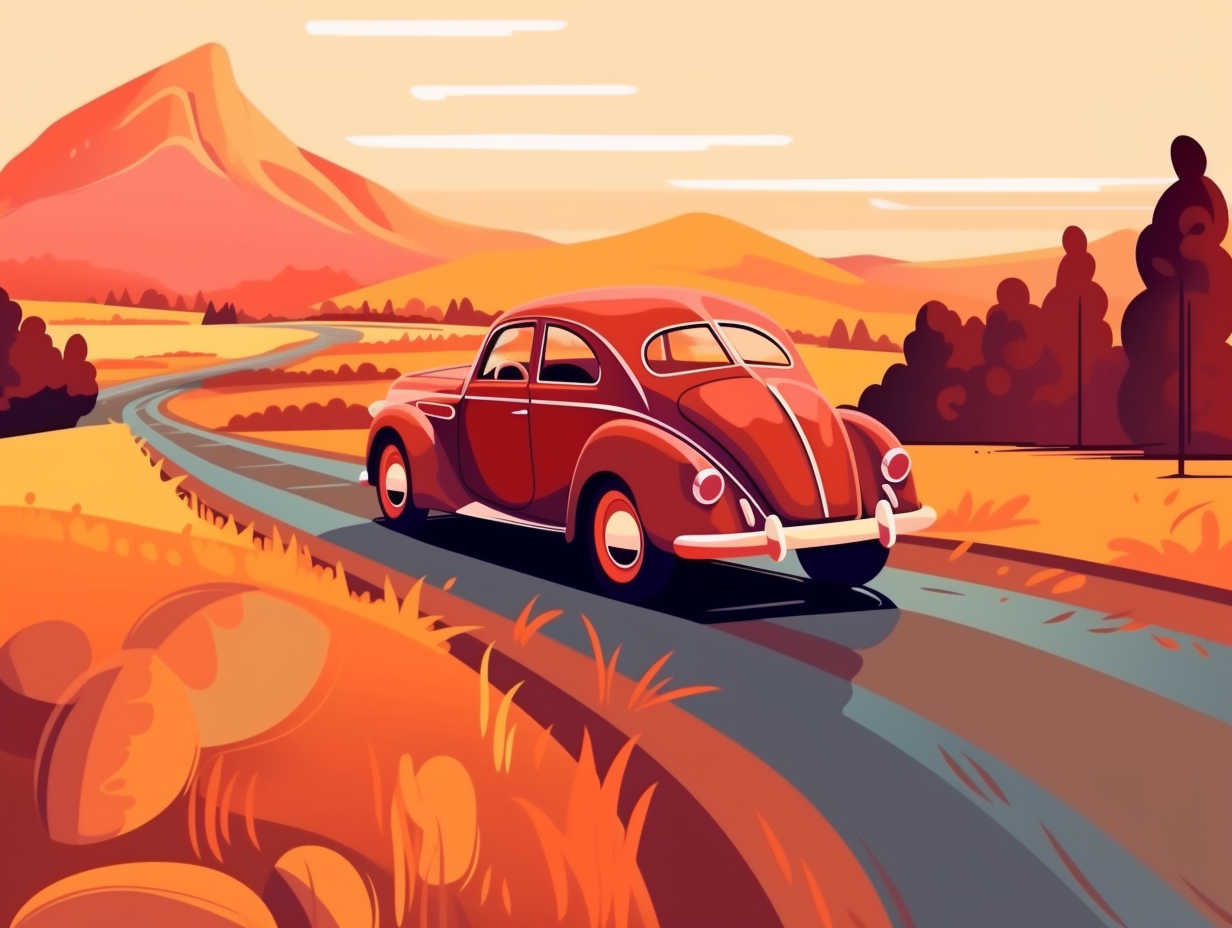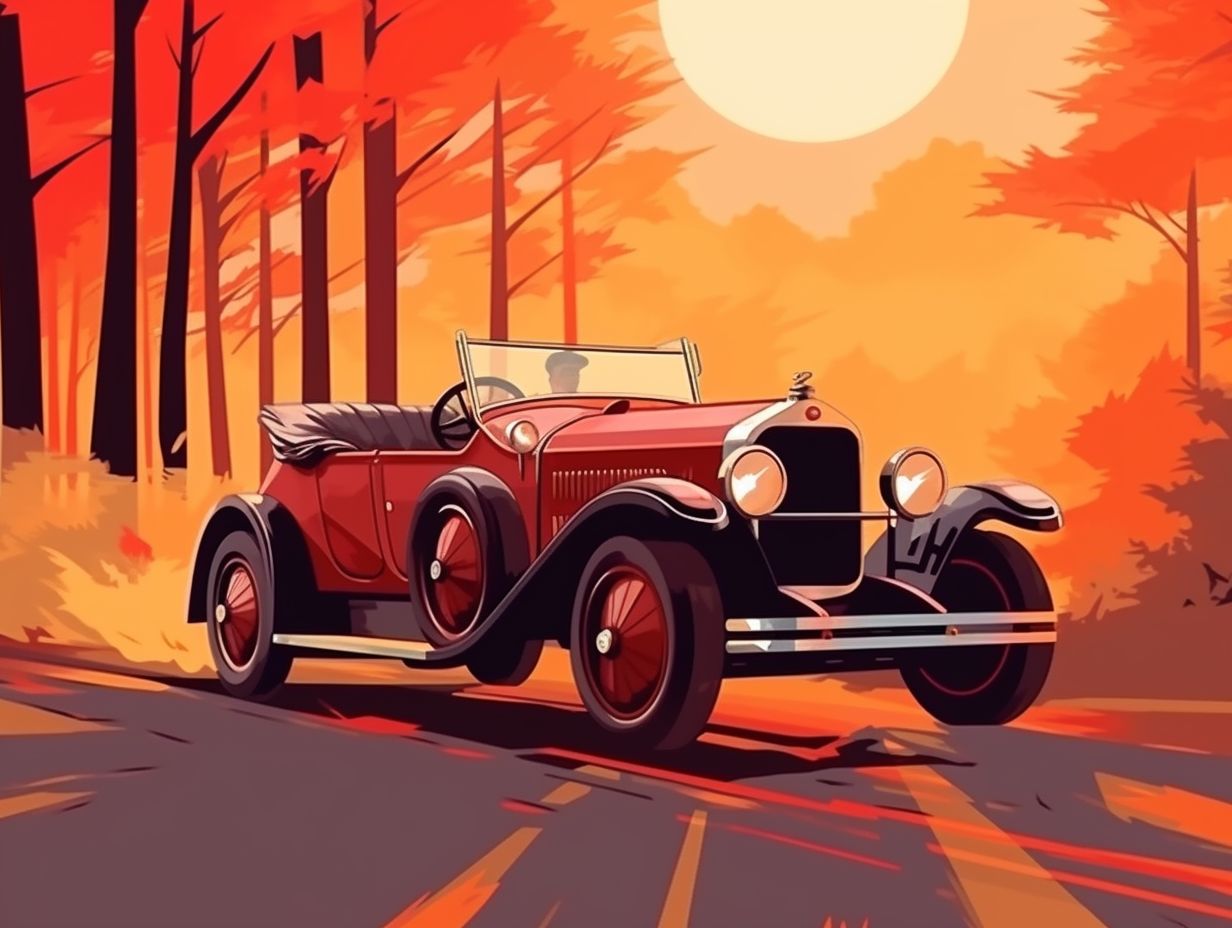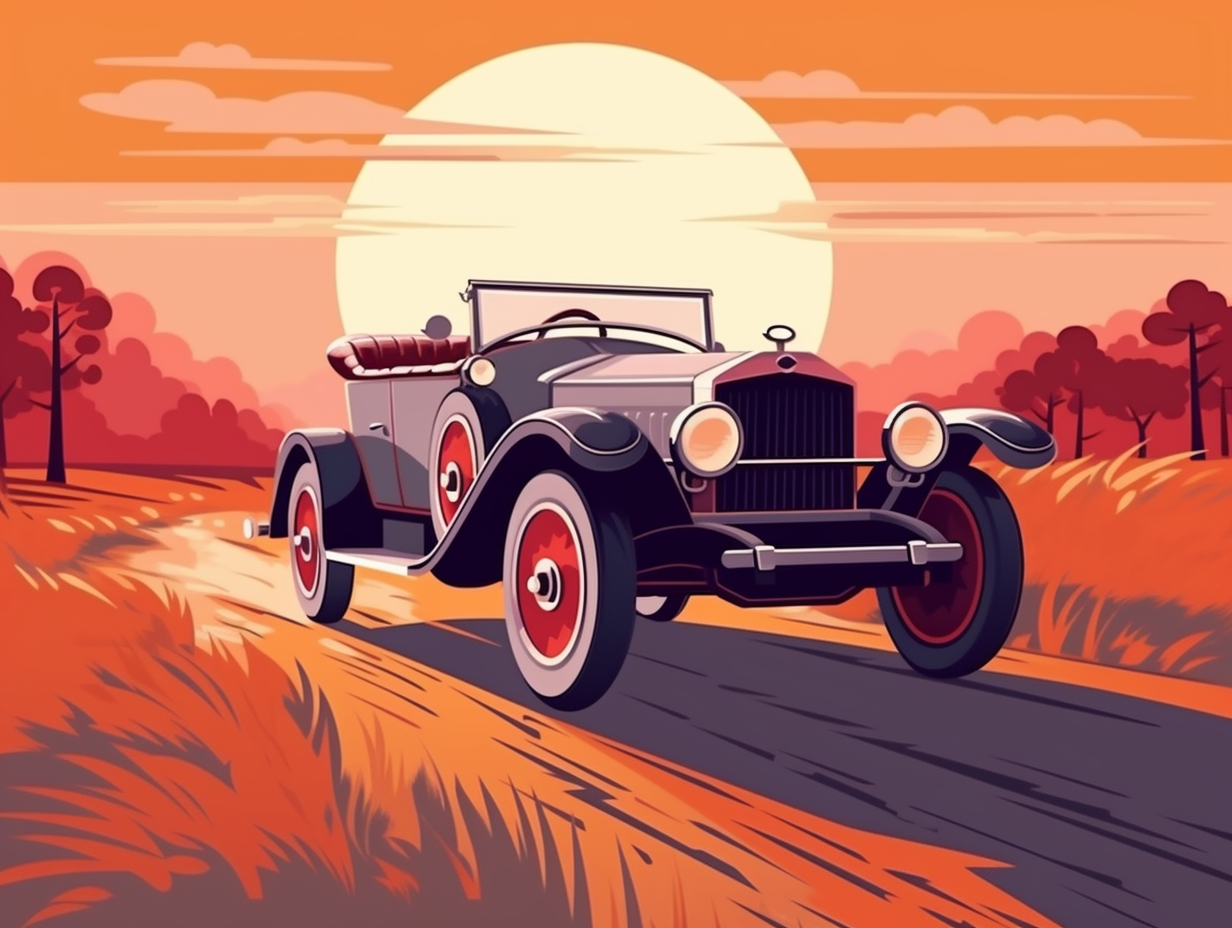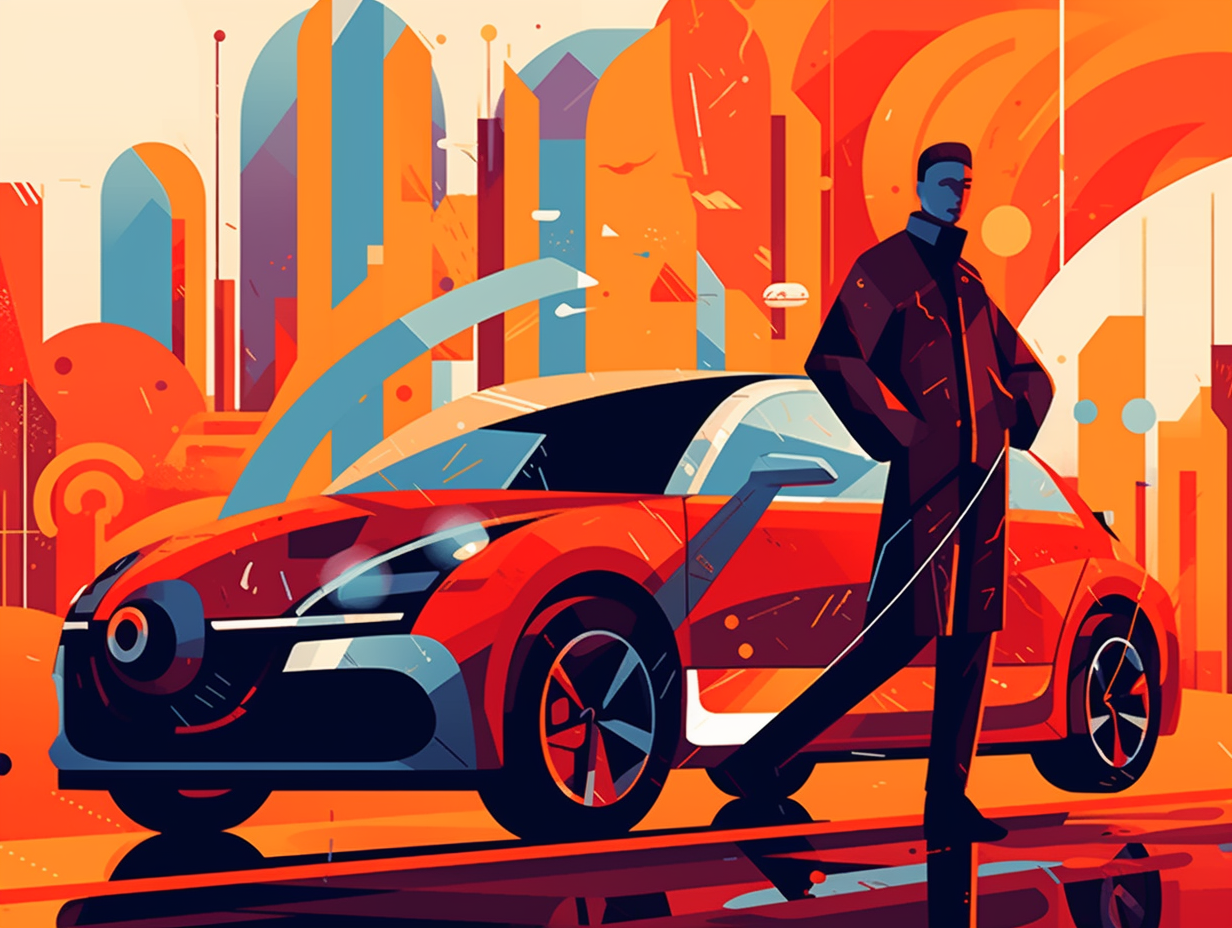12 Fascinating Fun Facts About the First Car: The Parisian Journey That Sparked Automotive History

1. Benz's Blazing Speeds
Before Henry Ford got us all revved up, Karl Benz was cruisin' in style at a whopping 16 km/h! Hold onto your top hats, folks: The first car was invented in 1886 by Karl Benz, flaunting a one-cylinder four-stroke gasoline-powered engine with a top speed of 16 km/h (10mph). While Rudolf Diesel designed an engine to run on vegetable oils like hemp and even peanut oil for the 1900 World's Fair, the Benz Patent-Motorwagen did not run on those groovy biofuels, contrary to popular belief.
Source => engineersgallery.com
2. La Marquise's Fiery Races
"Move over, Batmobile!" quoth the Steaming Marquise, for this 1884 De Dion Bouton et Trépardoux Dos-à-Dos Steam Runabout was not only the first automobile to ever race itself, but it also had a penchant for consuming paper, wood, and coal as breakfast: La Marquise, as she's affectionately known, is the oldest running automobile in the world, sold for a whopping $4.6 million in 2011; she took a leisurely 30-40 minutes to puff up enough steam to drive, reaching top speeds of 38 mph, and famously completed the Paris-to-Versailles round trip at an average of nearly 16 mph in 1887—with no other car to challenge her!
Source => en.wikipedia.org

Did you know that way back in 1974, the innovative Zele 1000 electric car was turning heads with its boxy design and impressive 50-mile range? Discover the charm of this ahead-of-its-time city car! 🚗⚡
=> Fun Facts about Cars
3. Cugnot's Snail-Like Steamer
As snail-like as a leisurely stroll through the Gardens of Versailles after a heavy lunch: the fardier à vapeur – the first self-propelled vehicle, invented by Nicolas-Joseph Cugnot – boasted a whopping top speed of 3.6 kilometers per hour (roughly 2.25 miles per hour). Even though it was as swift as a sleepy tortoise, this steam-powered contraption made history by transforming the landscape of transportation and giving rise to our modern-day car obsession.
Source => en.wikipedia.org
4. Porsche's Hybrid Elephants
Before Doc Brown dreamt of a plutonium-powered DeLorean, Ferdinand Porsche was brewing his own hybrid concoction: In 1900, he designed the Lohner-Porsche "Mixte," the first functional hybrid car, which combined a combustion engine, two electric motors, and the weight of two whole elephants – almost two tonnes – to power its journey!
Source => newsroom.porsche.com

5. Turn Signal Arm Waving
Before the groundbreaking invention of turn signals, drivers had to channel their inner semaphore specialists, frantically waving their arms to communicate with each other like they were trying to signal a naval fleet: Enter the ever-evolving history of car blinkers, which saw innovations like mechanical "Trafficators," semaphore indicators, and eventually the modern turn signals we know today following Edgar A. Walz Jr.'s 1925 patent and Buick's factory-installed flashing signals in 1939.
Source => secondchancegarage.com
6. High Beam Pit Stops
You know those pesky high beams that blind you when you're driving at night? Well, there was a time when they were optional, and adjusting them required quite the pit stop: The first electric headlamp was an optional feature until 1908 when Peerless made it standard, but it was 1917 before a lever was introduced on Cadillac models for easier adjustment, and only in 1924 did the Bilux bulb make switching between high and low beams a piece of cake.
Source => stateofspeed.com
7. No-Button Climate Control
Before there were frosty commutes and sweaty summer drives, motorists of the 1930s felt the heat and the chill with no built-in, button-powered relief! Talk about a hot date or a chilling adventure: Packard introduced the first optional air conditioning system in 1939, costing a whopping $274 - nearly a fifth of the average yearly income at that time, making it an impractical luxury. Fast forward to 1954, when Pontiac and Nash took the lead with front-mounted A/C systems, and suddenly, climate-controlled drives became cool.
Source => fjcinc.com
8. Model T's Affordable Fashion
Painting the town black: the Model T wasn't adorned in such Gothic garb merely due to some quick-dry sorcery; nay, it was black paint's humble affordability, tough-as-nails durability, and glossy soirée-ready finish that made it the automotive cloak of choice for the frugal American family.
Source => skeptics.stackexchange.com
9. Feathery Rebellion on Wheels
In a tiny act of feathery rebellion on wheels, the 1910 Brooke Swan Car huffed and puffed with its glowing amber eyes and raindance-inducing bugle calls—practically dousing unsuspecting pedestrians and potentially leaving a trail of "bird droppings" – how fowl! : This remarkable car, commissioned by Robert Nicholl ‘Scotty’ Matthewson, was handcrafted in England, featured a swan design including a beak that spewed hot water, a musical Gabriel Horn, and a whitewash-dumping valve at the rear, attracting the attention of Maharaja Ripudaman Singh who later added it to his collection of rare wonders before finally roosting at the Louwman Museum.
Source => magazine.derivaz-ives.com

10. Hands-On Old School GPS
Back in 1909, when "rotary phones" meant turning a map disc with your hands: J.W. Jones introduced the Jones Live Map, an ingenious early GPS system that connected to a car's odometer via a cable. Drivers would purchase paper route discs from The Touring Club of America and watch in amazement as their journey unfolded in real time on the map's perimeter. Sadly, the main downside remains true for today's GPS systems too – updating those pesky road changes!
Source => saturdayeveningpost.com
11. Seat Belt Fashion Statements
Before seat belts became the life-saving fashion accessory they are today: Edward J. Claghorn patented the first vehicular seat belt in 1885 to protect tourists, resembling a modern-day climber's harness, with the first recorded use not appearing until the late 1920s and widespread adoption only occurring in the mid to late 1950s.
Source => secondchancegarage.com
12. The First Stroll and Steadfast Race
Before the Fast and the Furious, there was the Stroll and the Steadfast: The first automobile race took place in France in 1895, covering 1,200 kilometers from Paris to Bordeaux and back, with Panhard-Levassor claiming victory in just over 48 hours but ultimately getting disqualified on a technicality.
Source => historycollection.com
Related Fun Facts




















